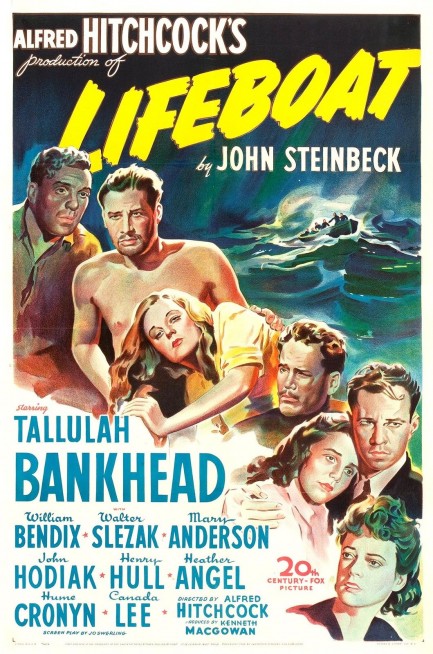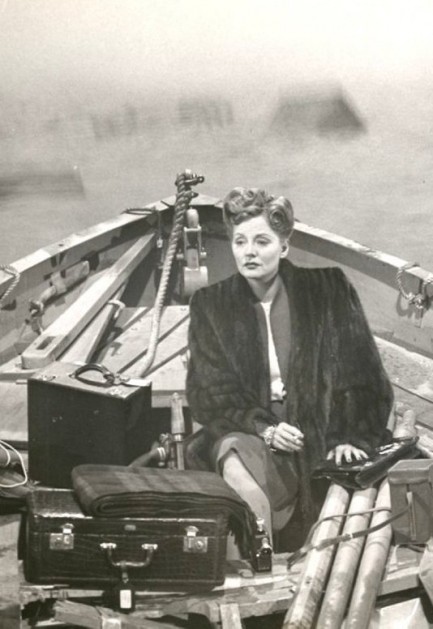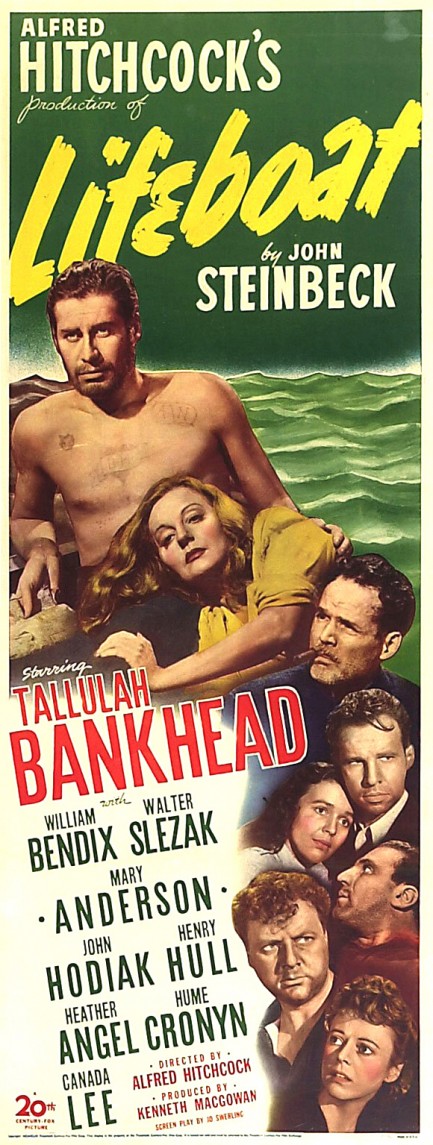| Vintage Pulp | Jan 11 2018 |

Bankhead and Co. try to deal with an ocean of differences.

The best thing about Lifeboat is Tallulah Bankhead. Simple as that. Top billed, tasked with bringing a complex character to life, and working in a film with huge expectations because it was written by literary laureate John Steinbeck and helmed by internationally renowned director Alfred Hitchcock, she delivers the goods. If you haven't seen it, it's an adventure and character study about a group of cruise ship passengers who survive a German u-boat attack and find themselves adrift on the Atlantic Ocean. There's a tinge of war propaganda to it, a touch of we're-humans-and-the-other-side-aren't, but when you consider that Germany was a genocidal regime, and news reports had been touching on this  fact for two years (though visual evidence wouldn't appear until after May 1945) Lifeboat is remarkably subtle in that regard.
fact for two years (though visual evidence wouldn't appear until after May 1945) Lifeboat is remarkably subtle in that regard.
 fact for two years (though visual evidence wouldn't appear until after May 1945) Lifeboat is remarkably subtle in that regard.
fact for two years (though visual evidence wouldn't appear until after May 1945) Lifeboat is remarkably subtle in that regard.Anyway, if you ever want to see a star go full nova, check this film out—Bankhead is funny, bitter, sly, ironic, desperate, and more, helped along by reliable old William Bendix, as well as Hume Cronyn, Mary Anderson, and Walter Slezak in a pivotal role. And I guess we don't have to tell you one of Hitchcock's most famous stories came from this movie, the one about his camera accidentally getting upskirt shots of a pantyless Bankhead, and the question of whether the problem was one for hair, make-up, or wardrobe.
The poster above is a really nice piece of mid-century promo art and we spent a lot of computer time trying to discover who painted it, but to no avail. That wasn't a surprise, though. It's a painted version of the photo-illustration used on the panel length promo you see below, which means it's basically a copy job that numerous artists could have executed. But it's still nice compositionally, with its beautiful blue coloration, bright yellow title, and diagonal arrangement of faces. Lifeboat premiered in the U.S. today in 1944.





































































